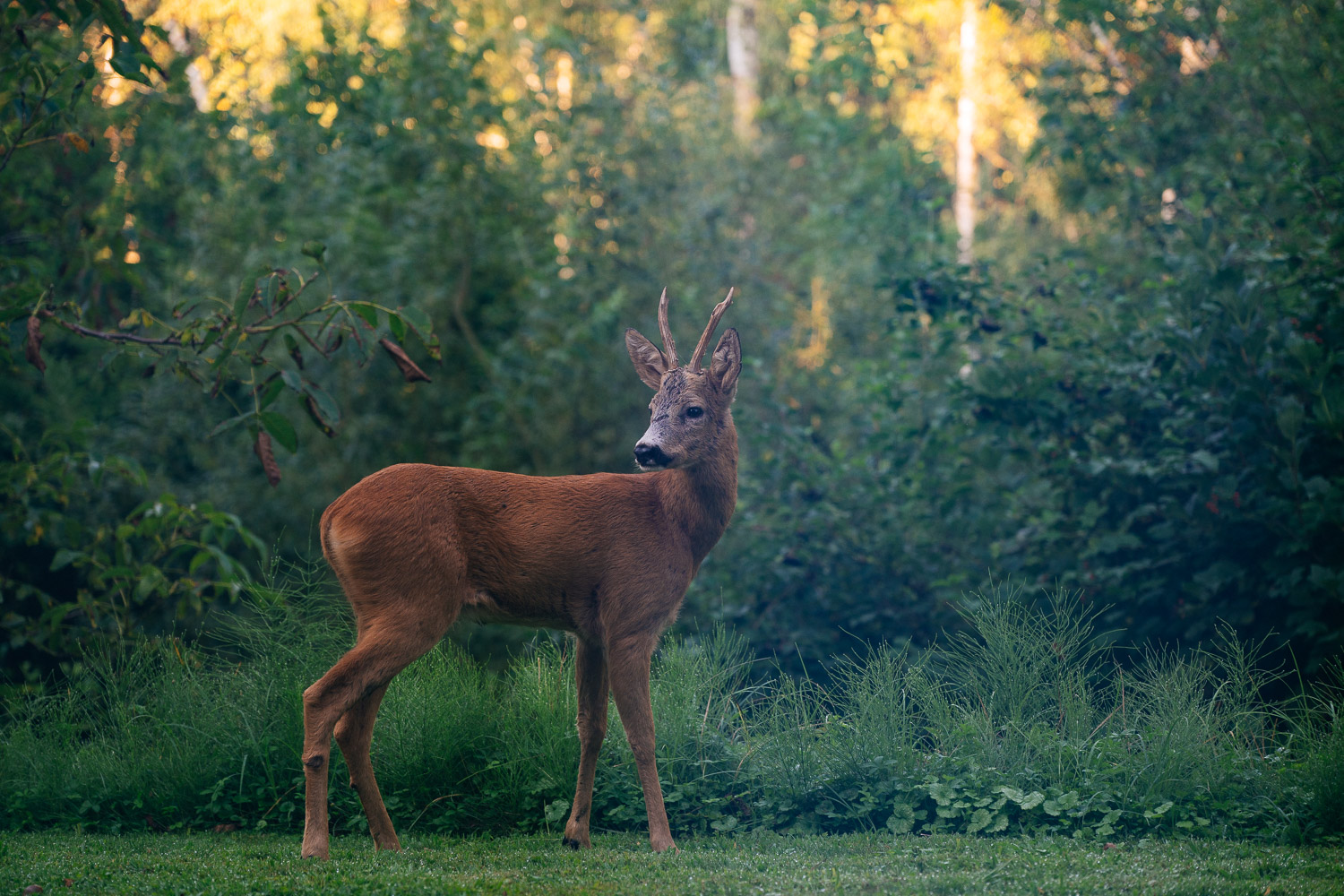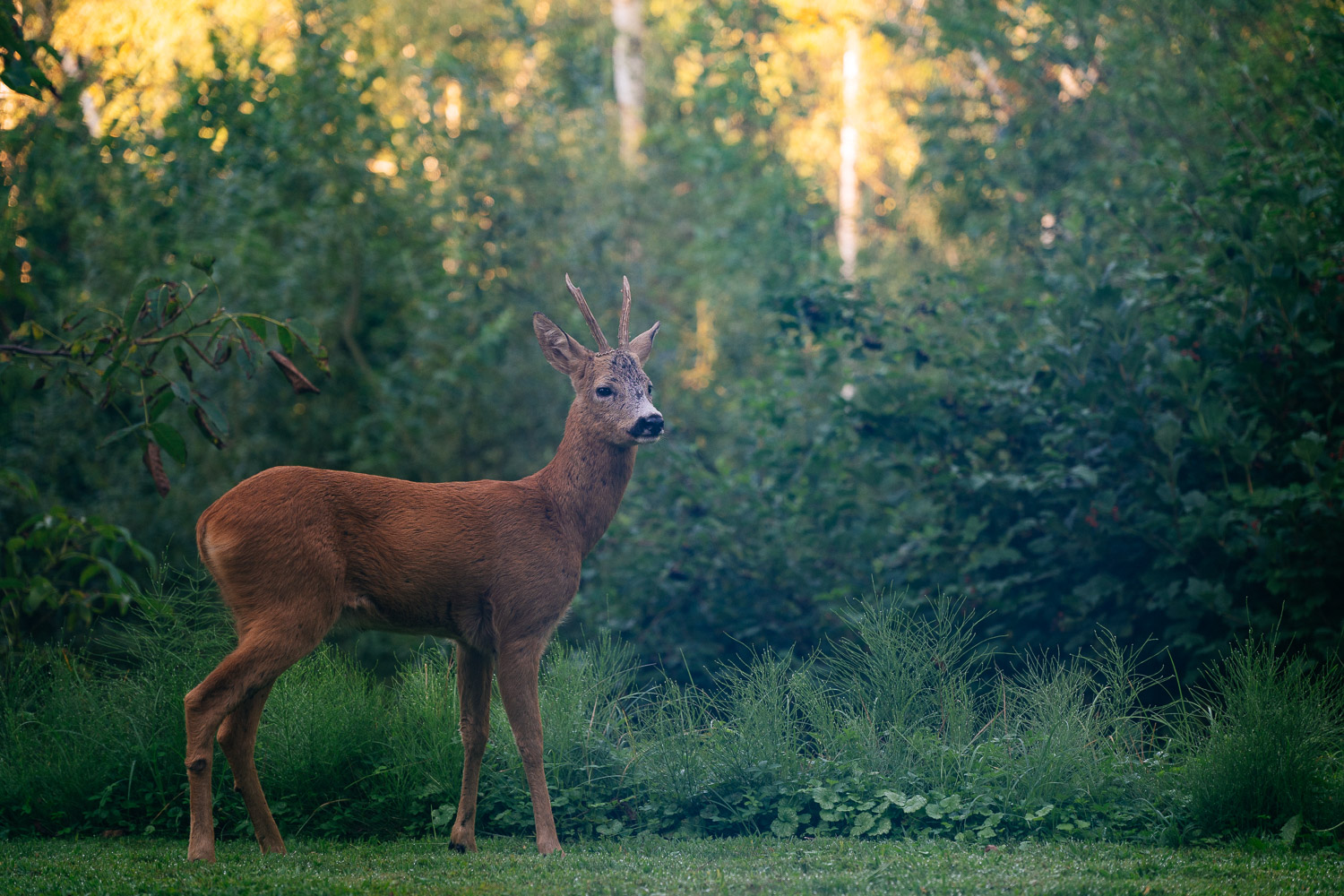 NIKON Z 8 (110mm, f/4, 1/125 sec, ISO280)
NIKON Z 8 (110mm, f/4, 1/125 sec, ISO280)
Since I got my Nikon Z8 I took images of various subjects but I didn’t expect to do any wildlife shooting as I don’t even have a tele lens or tele zoom lens yet.
I woke up early and when I opened the curtains I saw deer peacefully gracing in our garden. I first took an image with my iPad because that’s what I had on hand in oder to have evidence of the encounter. As soon as that was covered I got my camera with the longest lens that I currently own, the Z 24-120/4 S, and started shooting.
After a while I wanted to open the other window (on the other side of the room) in order to let some cool morning air in without spooking the deer in my garden. I only was able to capture those shots because I didn’t sleep in our bedroom. The reason why I didn’t sleep in the master bedroom was the current heat wave. I slept in the guest room in the lower floor because it is much cooler.
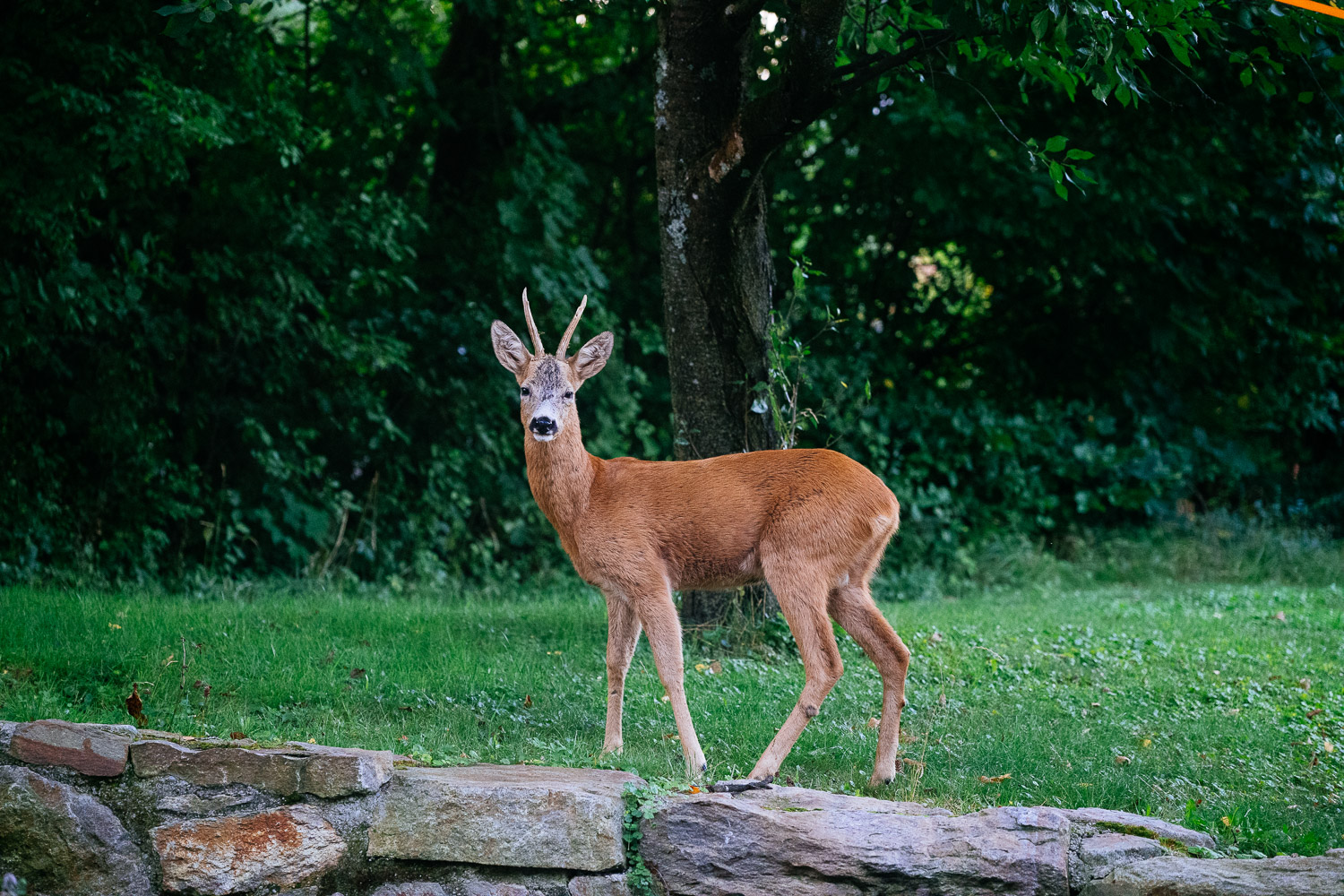 NIKON Z 8 (120mm, f/4, 1/125 sec, ISO5600)
NIKON Z 8 (120mm, f/4, 1/125 sec, ISO5600)
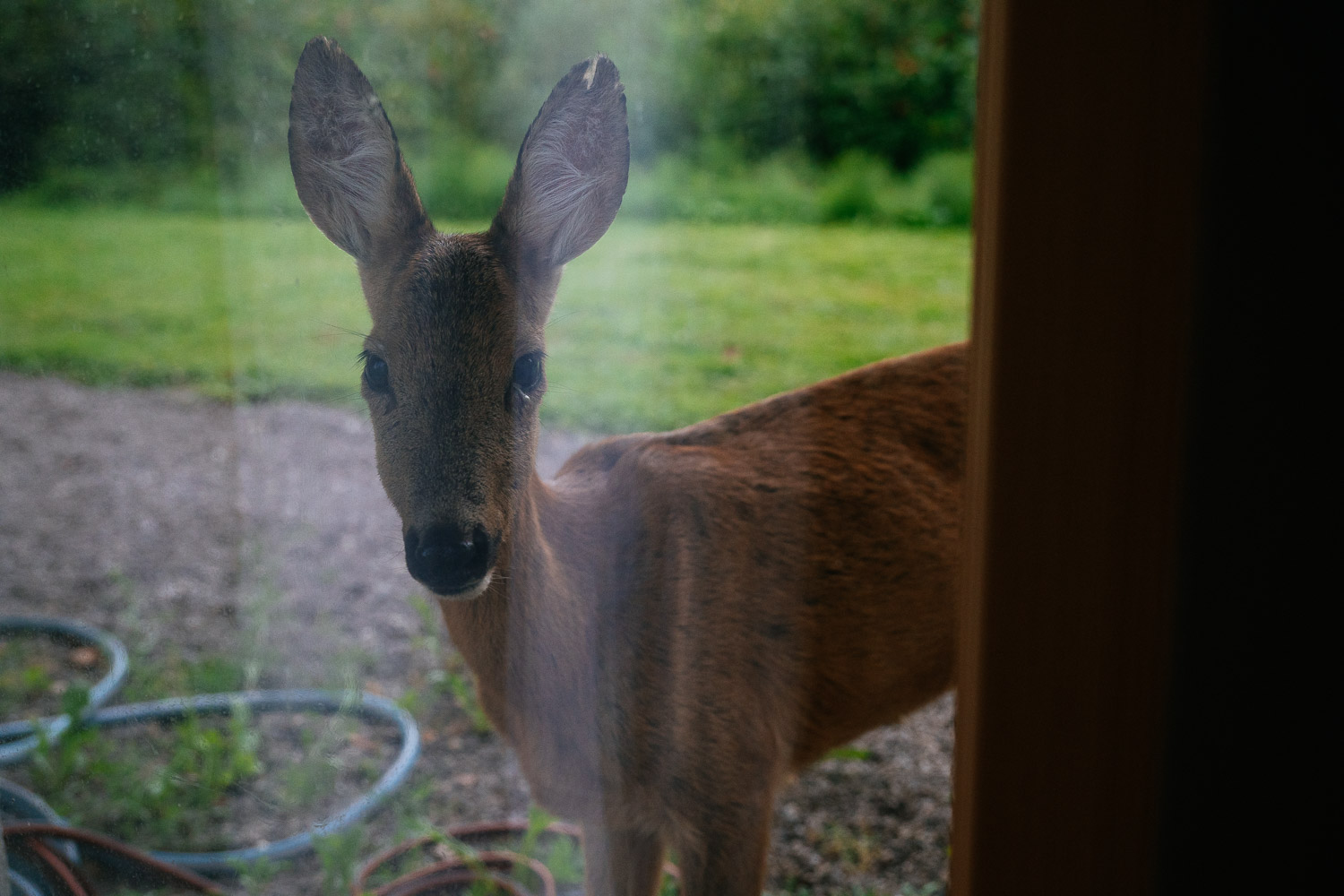 NIKON Z 8 (46mm, f/4, 1/125 sec, ISO1400)
NIKON Z 8 (46mm, f/4, 1/125 sec, ISO1400)
 NIKON Z 8 (59mm, f/4, 1/125 sec, ISO2500)
NIKON Z 8 (59mm, f/4, 1/125 sec, ISO2500)
But when I opened the curtain on the other window I found another deer staring straight at me. Wow! I was amazed that I didn’t spook it right away but we have very thick three layer windows. They are a little tinted and can act like a mirror sometimes so I guess it could not clearly see me.
As I was literally just an arms length away I turned my camera into silent mode to be on the safe side. Deer may have weaker eye sight but their hearing is excellent. Another big advantage of the Nikon Z8: absolutely silent operation. The other advantage is the autofocus which is just amazing. I used AF-C wide tracking with animal eye-detection and it worked despite the poor light and the fact that I was shooting through a lot of glas.
I used the de-haze feature in Lightroom in order to remove the reflections but of course you can still see it in the images where I could not shoot in a perfect 90 degrees angle through the window. But I’m truly impressed with the AF of the Nikon Z8. This is really something completely different to what I was used to the last couple of years. I never had a real issue with the AF from Fuji but I just didn’t know what is possible today with a modern mirrorless camera. Do I need this AF performance for my photography? Not really for over 90% of my photography but it is nice to have it when you need it.
 NIKON Z 8 (120mm, f/4, 1/125 sec, ISO1250)
NIKON Z 8 (120mm, f/4, 1/125 sec, ISO1250)
 NIKON Z 8 (120mm, f/4, 1/125 sec, ISO3600)
NIKON Z 8 (120mm, f/4, 1/125 sec, ISO3600)
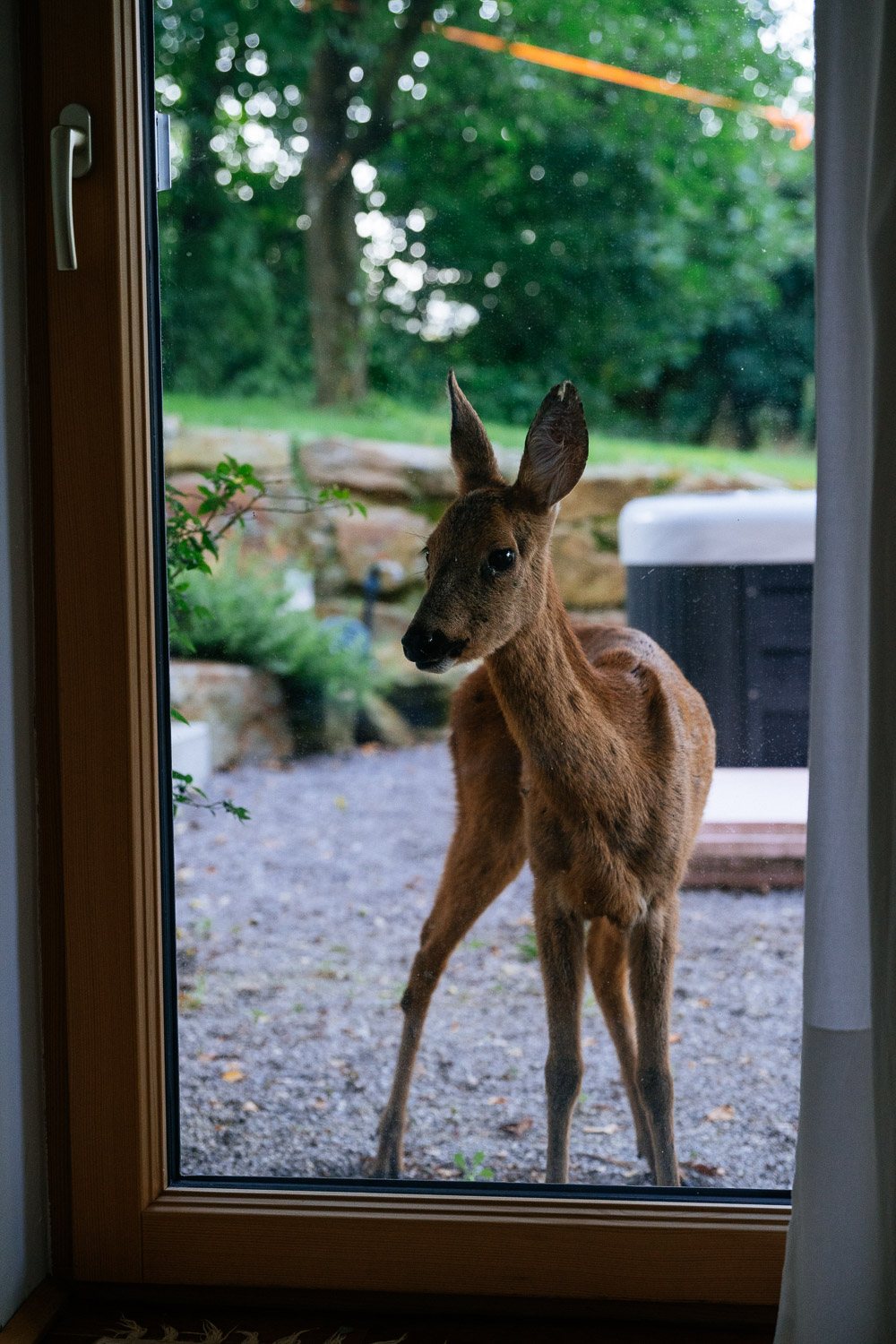 NIKON Z 8 (65mm, f/4, 1/125 sec, ISO1600)
NIKON Z 8 (65mm, f/4, 1/125 sec, ISO1600)
As you can see there was no chance for me to open any of the window-doors to get some cool morning air so I focused on photography instead. The smaller deer was especially curious. It recognised the movement when I switched to the vertical format and looked straight into my lens. That’s when I shot the image below. Again eye-AF worked flawless with no hunting but what impressed me the most was the lens.
The Nikon Z 24-120/4 S is just amazing. It is not a cheap substitute if you can’t afford the Z 24-70/2.8 S, it is so much more. Because I sold Fuji lenses and bought two Nikon lenses second hand I met three other enthusiastic photographers. All had the Nikon Z8 but two of them had the Z9 before and sold it when the Z8 came out. Two also had the 24-70/2.8 and sold it after they tested the 24-120. I also considered the 24-70/2.8 because I know what such a lens can do on a full frame sensor but ended up getting the 24-120 instead. Partly because of its lower weight but mostly because of its added versatility. The difference in between 120mm and 70mm is huge. On a high res camera you can get away without a tele zoom lens most of the time especially since this lens is sharp at 120mm and it’s much more useful for portraits too.
As you can see in the EXIF data I shot wide open all the time because there was not a lot of light when I started shooting. I even lowered the shortest shutter speed to 1/125s in order to keep ISO reasonable. On the first image I was still shooting at ISO 5.600 though because of the poor light and the fact that our energy saving windows cost about 2-3 stops of light.
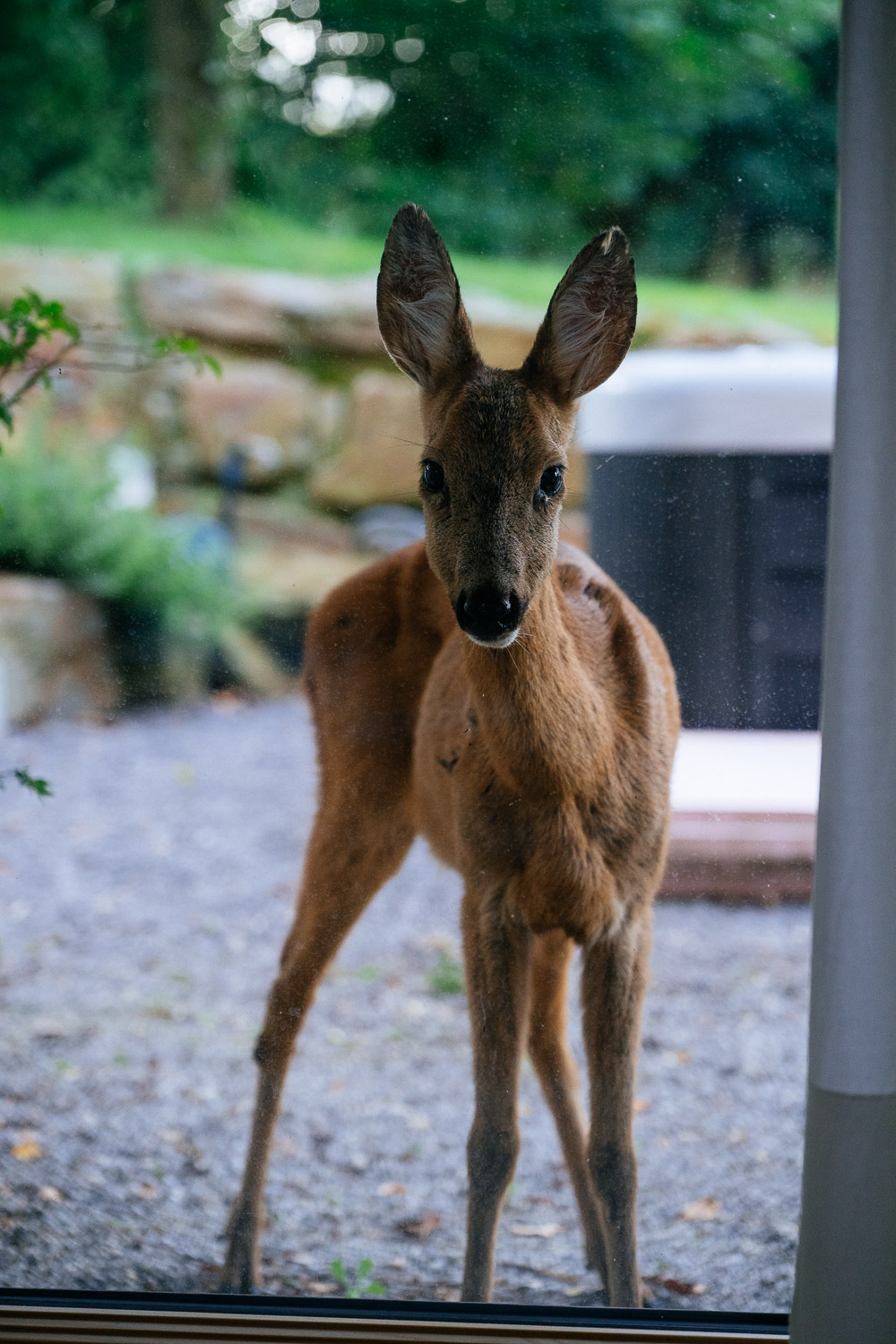 NIKON Z 8 (96mm, f/4, 1/125 sec, ISO1800)
NIKON Z 8 (96mm, f/4, 1/125 sec, ISO1800)
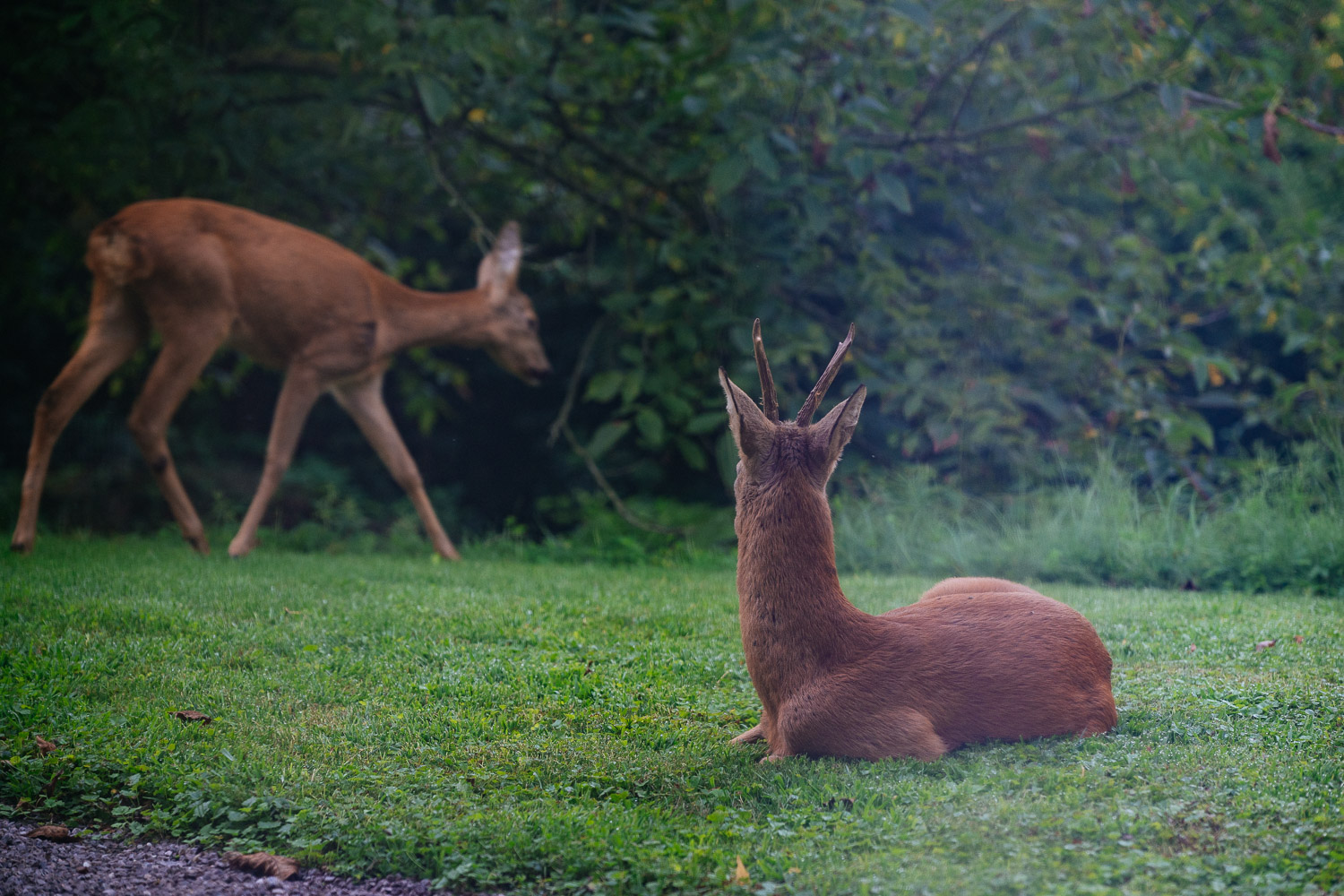 NIKON Z 8 (96mm, f/4, 1/125 sec, ISO400)
NIKON Z 8 (96mm, f/4, 1/125 sec, ISO400)
Before I finally pulled the trigger on the Nikon Z8 I had a “cool down”-coffee with a friend in order to re-think my decision. The last 8 years I was only shooting with Fuji X and I got used to compact and light cameras and lenses. The Nikon Z8 is anything but compact and light. It is a brick of a camera but it is also the perfect tool. A tool that gets the job done all the time, every time.
During selling some of my old stuff and buying some lenses second hand I found out that many had other cameras as their workhorse (though only one of my customers was a professional photographer). The professional, a sport photographer had Sony full frame and Fuji medium format for work and Fuji X for fun. He bought my X-Pro3. The others had Nikon Z8 and beside that Fuji if they wanted to use a small camera.
If you like the shooting experience Fuji X can give you something no other camera brand can give you. I think this is especially true for the Fuji X-Pro line when used with small primes. The Nikon Z8 on the other hand simply gets the job done. If a friend would ask me to shoot his wedding I would not have to think twice which camera to take. The final results in between Fuji and Nikon are not that different at all but the Nikon gets me there without any drama.
A fun shoot is a different story. Once my new camera honeymoon period is over I guess I would take the Fuji.

